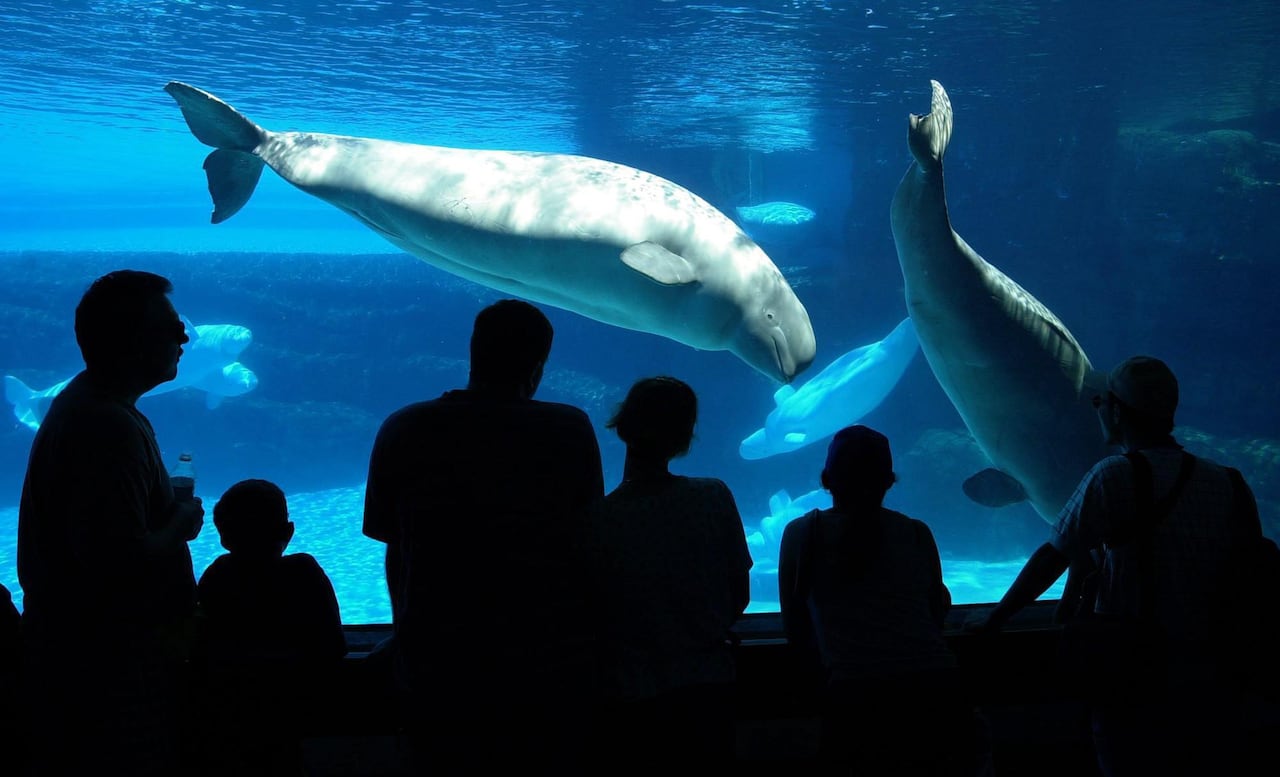If you can’t leave them, sell them, or send them to a sanctuary, what do you do?
Although Marineland has no current plans to euthanize the 30 belugas that swim in what remains of the Niagara Falls amusement park, the company threatened to do so last week in a letter to Canada’s Federal Fisheries Minister Joanne Thompson, obtained by CBC News.
The park would face the “devastating decision to euthanize” unless the federal government could provide them with financial support, Marineland said in a letter.
The message came days after the minister denied Marineland’s request for authorization to send the whales to Chimelong Ocean Kingdom, a theme park in China that was interested in purchasing the mammals. The government said it intended to prevent whales from being used for entertainment purposes.
So far, Marineland has been unable to find a suitable sanctuary or other facility to house the whales. Theme park owners said in a report that a proposed sanctuary in Nova Scotia is heavily polluted and not on track to be developed soon.
Marine mammal experts say that if the threat of beluga euthanasia became a reality, the option would come with a number of logistical and moral issues.
WATCH | Marineland’s Request to Export Belugas to China Denied by Feds:
The Department of Fisheries and Oceans has denied Marineland Canada’s request to export the remaining 30 beluga whales to the Chimelong Ocean Kingdom theme park in China. The decision is in line with regulations to protect marine mammals from exploitation.
Euthanasia medication is problematic, says vet
For animals like those at Marineland, who are used to being examined by veterinarians, euthanasia is usually a two-step process, says veterinarian and marine biologist Chris Harvey-Clark.
First, veterinarians would have to give the whales a sedative to ensure they didn’t feel any pain during the process, and then administer a medication that would end their lives.
“That’s okind do gold standard method for euthanasia,” said Harvey-Clark, who is also affiliated with the Whale Sanctuary Project in Nova Scotia as a consultant.
But the drug used to end life tends to be a barbiturate, Harvey-Clark says, which presents other problems when the procedure is performed.it’s done. Drugs can penetrate groundwater if animals are buried or can kill scavengers that make whales’ meal if they were left to decompose.
And with 30 whales in total, each weighing between one and two tons, that leaves a lot of whale to dispose of.
Andrew Trites, director of the Marine Mammal Research Unit at the University of British Columbia in Vancouver, adds that whales are, in many cases, considered too large to be cremated, making this method of disposal difficultalso.
And because they spent their lives in captivityIn life, Trites says whales wouldn’t know how to hunt for food, so releasing them into the wild isn’t an option.
Ethical issues
Trites and Harvey-Clark warn that there are also a number of ethical obstacles to potentially euthanizing the whales.
Euthanasia is a veterinary optionAnimals tend to feel morally good when an animal is suffering and the end of its life is near, Harvey-Clark said.
In cases where death is not immediatenente, he says the morningevery choice is not that simple.
“You really need to look at the well-being of the animal – what its life is like and what its future is going to be like, and from that make a, you know, an intelligent decision about whether this animal should be humanely euthanized or whether there is another way,” Harvey-Clark said.
LISTEN | The fate of Marineland’s beluga whales:
The current19:17The fate of Marineland’s beluga whales
Marineland wanted to send its 30 captive beluga whales to an amusement park in China – but the federal government stopped them. And with the once-iconic amusement park closing its doors, the question of what to do with the whales and who should be responsible remains unclear. W
Furthermore, belugas are highly social and skilled at communicating with each otherallowing them to form close bonds with other whales. Harvey-Clark says the loss of the whales one by one would presumably be something the belugas would notice, which could cause damage before they are ultimately killed.
“They are certainly aware enough to understand that the environment they are in is changing very quickly, and that would be very stressful,” Harvey-Clark said.
Trites adds that because animals are often euthanized when they are sick, there may be some experimentation when it comes to the exact dosage the whales should receive in order to euthanize them as well.

“None of these [euthanasia processes] It seems like something I or anyone I know would want to be involved with,” Trites said.
Trites says he hopes the threat never comes to fruition and that the whales can find homes where they can live good lives and contribute to future research on belugas, which face increasing challenges due to climate change.
“But ultimately, this threat could become reality if no one moves any of their pieces on this chessboard,” he said.


Leave a Reply